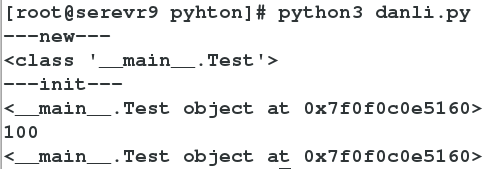Python的工廠模式和單例模式
阿新 • • 發佈:2018-12-20
工廠模式:
解耦 定義類或方法,讓其功能越單一越好
#!/usr/bin/python
#coding:utf-8
class Cake():
def __init__(self,weidao="預設"):
self.taste=weidao
class AppleCake(object):
def __init__(self,weidao="蘋果"):
self.taste = weidao
class OrangeCake(object):
def __init__(self,weidao="橘子"):
self.taste = weidao
class CakeStore(object):
def taste(self,weidao):
if weidao == "蘋果":
cake = AppleCake()
print("------味道%s------"%cake.taste)
elif weidao == "橘子":
cake = OrangeCake()
print("---------味道%s------"%cake.taste)
haolilai = CakeStore()
haolilai.taste("橘子")
[ 在這個程式碼中如果我們想再增加一種口味的蛋糕就需要在CakeStore()這個類裡面增加程式碼,在外面再寫一個類,這樣不太好
工廠方法:
class CakeFactory(object):
def CreateCake(self,weidao):
if weidao == "蘋果":
cake = AppleCake()
elif weidao == "橘子":
cake = OrangeCake()
return cake #這裡一定要有返回值,因為我們需要這個函式的執行結果在另一個函式裡面呼叫
class CakeStore(object):
def __init__(self):
self.factory = CakeFactory()
def taste(self,weidao):
cake = self.factory.CreateCake(weidao)
print("-----品嚐味道:%s-----"%cake.taste)
haolilai = CakeStore()
haolilai.taste("橘子")
[ 單例模式
__new__方法
class Test(object): #初始化功能,往往完成物件屬性的設定 def __init__(self): self.num = 100 print("-------100------") print(self) #完成建立一個物件 #當a = Test()執行的時候,是先呼叫__new__方法完成建立物件,然後緊接著呼叫__init__(),一般不重寫new方法 def __new__(cls): print("---new--------") print(cls) return super().__new__(cls) #cls表示當前類,即建立一個當前類的物件。 返回建立的物件,這樣__init__中的self就可以呼叫此物件。 def __str__(self): return "hahah" a = Test() print(a.num) print(a)
#!/usr/bin/python
#coding=utf-8
class Singleton(object):
__instance = None #類屬性,可以通過類名去呼叫
__first_init = False
def __new__(cls,age,name):
if not cls.__instance:
cls.__instance = object.__new__(cls) #cls相當於類
return cls.__instance
def __init__(self,age,name):
if not self.__first__init:
self.age = age
self.name = name
Singleton.__first__init = True
a = Singleton(18,"haha")
b = Singleton(8,"hahah")
__new__方法總結:
- 至少有一個引數cls,代表要例項化的類,此引數在例項化時由python直譯器自動提供
- 必須要有返回值,返回例項化出來的例項,這點在自己實現__new__時需要特別注意,可以return父類__new__出倆的例項,或者是object的__new__出來的例項
- __init__有一個引數self,就是這個__new__的返回例項,__init__在__new__的基礎上可以完成其它初始化的動作,__init__不需要返回值
- 我們可以將類比作製造商,__new__就是前期的原始材料的購買環節,__init__就是在原有材料的基礎上加工、初始化商品環節。
#!/usr/bin/python4
#coding:utf-8
class Test(object):
def __init__(self):
self.num = 100
print("---init---")
print(self)
def __new__(cls):
print("---new---")
print(cls)
return super().__new__(cls)
# def __str__(self):
# return "xxxx"
a = Test()
print(a.num)
print(a)
 #!/usr/bin/python
#coding=utf-8
#!/usr/bin/python
#coding=utf-8
class Singleton(object): __instance = None #類屬性,可以通過類名去呼叫 __first_init = False
def __new__(cls,age,name):
if not cls.__instance:
cls.__instance = object.__new__(cls) #cls相當於類
return cls.__instance
def __init__(self,age,name):
if not self.__first__init:
self.age = age
self.name = name
Singleton.__first__init = True
a = Singleton(18,"haha")
b = Singleton(8,"hahah")
單例控制:
#!/usr/bin/python
#coding:utf-8
class singleton(object):
__instance = None
def __new__(cls):
if cls.__instance == None:
cls.__instance=object.__new__(cls) #等價於(super).__new__(cls)
return cls.__instance
a = singleton()
b = singleton()
print(a)
print(b)
 在__init__部分完成初始化的控制,只初始化一次。
在__init__部分完成初始化的控制,只初始化一次。
